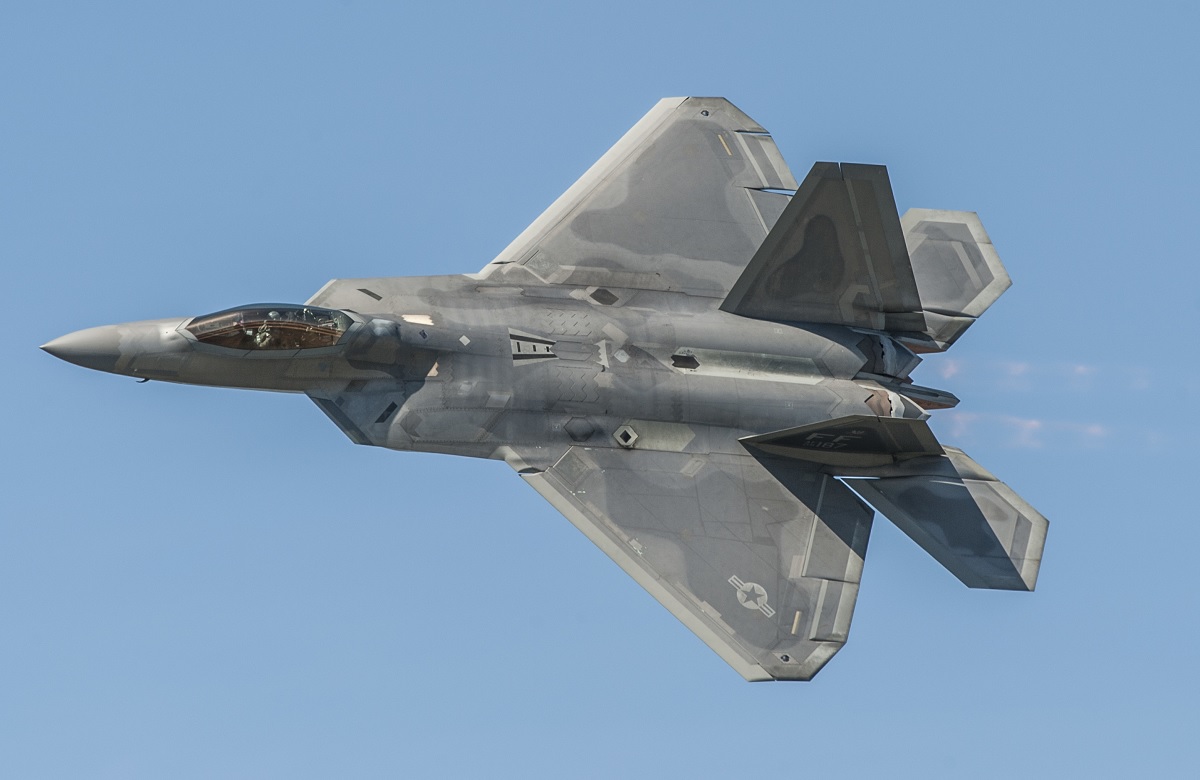The F-22 Raptor
The 5th Generation F-22 Raptor is the world’s premier air dominance fighter and a proven US Air Force (USAF) strategic deterrent.
A combination of sensor capability, integrated avionics, situational awareness, and weapons provides first-kill opportunity against threats. The F-22 possesses a sophisticated sensor suite allowing the pilot to track, identify, shoot and kill air-to-air threats before being detected.
The F-22’s characteristics provide a synergistic effect ensuring F-22 lethality against all advanced air threats. The combination of stealth, integrated avionics and supercruise drastically shrinks surface-to-air missile engagement envelopes and minimizes enemy capabilities to track and engage the F-22. The combination of reduced observability and supercruise accentuates the advantage of surprise in a tactical environment.
F-22 emergency landing aboard an aircraft carrier?
Nevertheless, despite its incredible capabilities, the F-22 could never do an emergency landing aboard an aircraft carrier, as Tim Hibbetts, former US Navy A-6 Intruder and F/A-18 Hornet pilot, explains on Quora.

‘“Shogun*, this is Hotshot three-zero. I’m an F-22 with 20 minutes of gas and 40 minutes from shore, my ejection seat has malfunctioned, and my canopy is sealed shut. I can’t eject and I can’t get out of the plane if I ditch. I need immediate clearance to land on your deck. Can you rig the barricade? Over.”
‘“Hotshot, this is Shogun Actual. Son, your country’s real proud of you and we’ll do everything we can, but you’re gonna die.”
‘Let’s get the ugly facts out first: as awesome as they are at their jobs, Air Force pilots don’t train to land on carriers. This is a skill that is underappreciated in the question. You can’t wish yourself onto the carrier whilst smokin’ in at over 100 knots (best case). Without at least a modicum of training, there’s no way this pilot would even get close to the safe parameters of a normal trap. A barricade landing is at least five times more complex and dangerous. You can’t get there from here. While there are Air Force pilots who’ve cross-trained with the Navy and earned their carrier wings, they will be the first ones to tell you that you can’t just bring any old plane aboard without training on that platform. It’s not a directly transferable skill (especially when it’s not designed to fly like that).
F-22 emergency landing aboard an aircraft carrier: risk of massive damage
‘Secondly, no carrier CO is going to risk massive damage to his flight deck (essentially a major component of his only offensive weapon system) by letting 45,000 pounds of nasty slam into it. While they could likely generate enough wind to get the approach speed down to 100 knots, that’s still far too much energy for the landing gear to absorb. While the F-22 probably has the specifications to be able to land in the netting ashore, those are systems where the aircraft lands and then enters the gear a couple thousand feet later. In this instance, the jets have to slam down into the deck immediately before the barricade.
‘At the descent rates we’re talking about the gear would collapse, likely just piercing through the jet and damaging the integrity enough that it would start losing parts either before or as it entered the netting. The resulting conflagration could be catastrophic, and would likely shut the carrier down for a significant period of time (though it would be interesting to see what damage the impact would have on the steel deck). If the deck was undamaged, we could likely see launches again in 12–24 hours. The crux is that no one has run this through the engineers and no sane commander would try it.
F-22 ramp strike
‘Let’s not even talk about if the F-22 is too low and strikes below the round-down (the edge of the aft deck). It’s happened. If you have a morbid fascination about ramp strikes, search for videos using that term.’
Hibbetts concludes;
‘The other problem would be the tremendous forces on the pilot during the crash. Unless everything was done exactly correctly, the impact would simply rend soul from body. No muss, no fuss, no dramatic last quip, “Landing on carriers is tougher than I thought. ”’
*Shogun is Nimitz’s callsign; “Shogun Actual” is the Commanding Officer. We don’t say “over” on aviation radios.
Photo by U.S. Military News, U.S. Air Force and U.S. Navy

